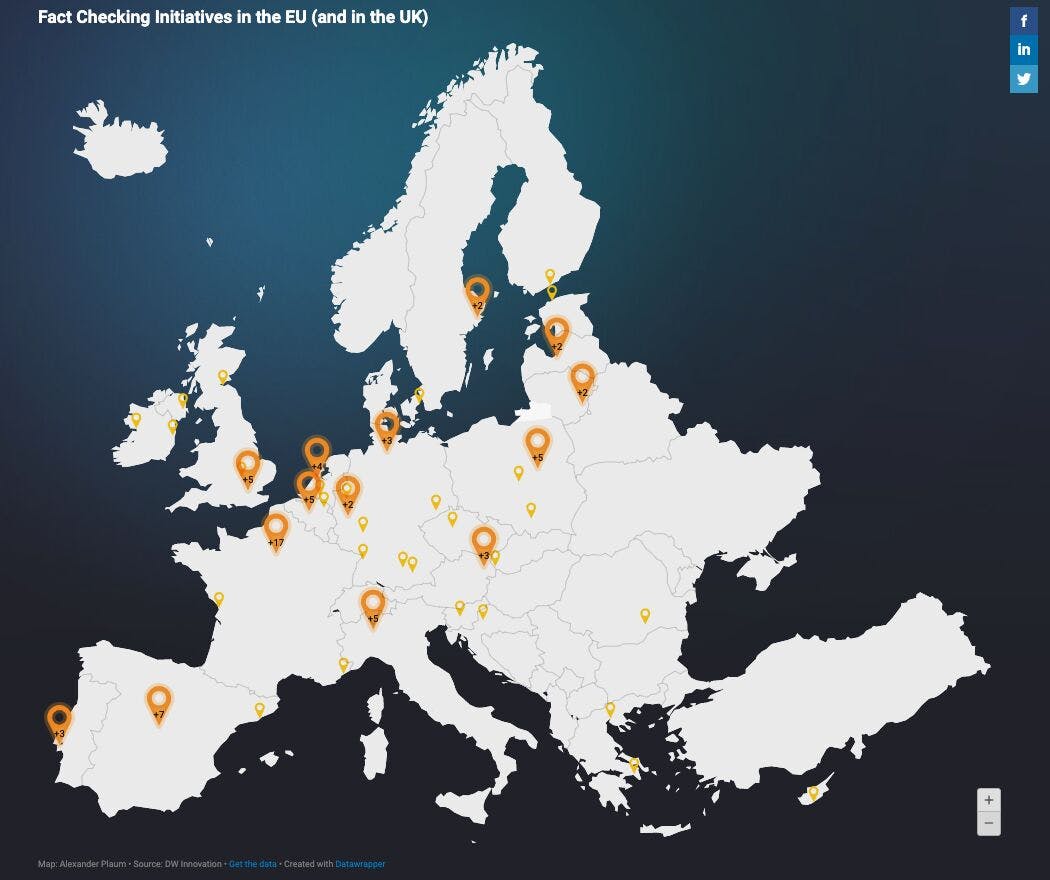Mapping the EU Fact-Checking Scene: Our Contribution to EDMO
,In a digitized public sphere full of mis- and disinformation, establishing a fact-checking or verification team has become mandatory for many news organizations and human rights defenders. From Stockholm to Rome and from Lisbon to Bucharest, investigative journalists and open source intelligence (OSINT) experts sit in front of their computers many hours a week to dissect false claims or manipulated photos and videos; content that is churned out on more or less unregulated social media platforms. Often underfunded and stressed out, these verification workers do important groundwork for a functioning democratic media landscape – a job that would benefit from more recognition, exposure, and networking. In the scope of Project EDMO (= European Digital Media Observatory), we have set out to make a small contribution towards that goal – by thoroughly mapping the fact-checking and verification scene in the EU (and possibly beyond).
EDMO is an ambitious large-scale project (technically: an EU-funded service contract) that brings together fact-checkers, media and information literacy (MIL) experts, researchers, educators and representatives of media organisations. It wants to "deploy a platform to support the work of a multidisciplinary community" that is "united in the fight against disinformation".
DW's Main Task
DW Innovation plays a small, but rather interesting role as a subcontractor to full consortium member ATC: We have been tasked to research and document fact-checking/verification activities that take place in the 27 member states of the EU (and in the UK) and produce visible outcomes. The latter aspect is important, as documenting all investigative work would be an impossible task: All journalists need to double-check the pieces of information they have been handed, this is a part of their job. They become interesting to us when their verification work is published on a designated website, e.g. in the form of a blog post, podcast, or video.
The First "Map"
Once completed, a first iteration of our research documentation (on the EDMO website and elsewhere) will hopefully include:
- a (responsive, interactive, zoomable, shareable) map that features the full names and locations of all relevant organizations
- a (responsive, searchable, sortable, shareable) table with extended information (e.g. type of organization, primary language, year of foundation etc.)
- at least one more (responsive, shareable) visualization that provides further insights (e.g. a timeline documenting the launch of fact-checking organisations in the EU)
Later on, we will try and add more features, e.g. an editorial section that describes an organization's work in more detail.
Technical Tools
As for the technical side, we have decided to use the following formats and web tools
- collaborative, "living" spreadsheets that can be turned into .CSV files
- a web-based data visualisation tool that can turn long rows of names and numbers and locations into more accessible, compelling forms of information
- embeddable and shareable maps and charts, i.e.: data visualisations that can easily be published and circulated via code snippets
- .CSV files as a fallback option–in case the EDMO consortium wants to change tools at some point
